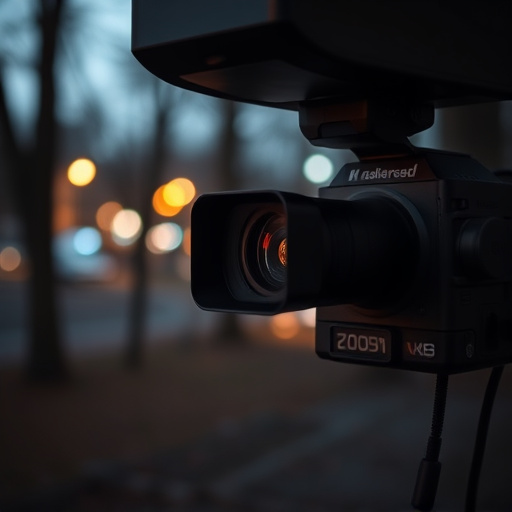Wireless spy cameras, with their diverse disguises and remote connectivity, offer powerful surveillance but demand strategic placement for optimal effectiveness. Success relies on creative camouflage, integrating technology into everyday objects or environments unnoticed. Location-specific considerations are crucial, including proximity to the target area and minimizing electronic interference. Regular maintenance and advanced detection tools like thermal imaging and specialized software further enhance privacy and security when deploying How to Conceal Spy Cameras effectively.
Uncover the secrets of wireless surveillance equipment location detection with our comprehensive guide. From understanding the diverse range of spy cameras on the market to mastering the art of disguise, this article equips you with essential knowledge. Learn creative ways to conceal camera components and explore location-specific factors influencing signal strength. Discover advanced techniques employed by professionals for precise spy camera detection. Master the art of concealing surveillance equipment to stay one step ahead in today’s security landscape.
- Understanding Wireless Surveillance Equipment: Unveiling Common Types of Spy Cameras
- The Art of Disguise: Creative Ways to Conceal Camera Components
- Location-Specific Considerations: Factors Affecting Signal Strength and Detection
- Advanced Techniques for Spy Camera Detection: Tools and Methods for Professionals
Understanding Wireless Surveillance Equipment: Unveiling Common Types of Spy Cameras
Wireless surveillance equipment, or spy cameras, come in various forms and sizes, each with unique features for concealed monitoring. Understanding these different types is crucial when trying to detect their presence, especially if you’re looking to prevent covert surveillance. Common types include miniature cameras that mimic everyday objects like pens, keys, or even plant pots—perfect for subtle placement. Some are hidden within ordinary light fixtures or smoke detectors, while others can be disguised as common household items like mirrors or picture frames.
These devices’ tiny size and remote connectivity make them highly versatile for installation in hard-to-reach or discreet locations. However, their effectiveness relies on strategic placement. Knowing how to conceal these spy cameras is an art and a necessary skill to protect privacy. By understanding the techniques used for hiding these devices, one can also devise methods to detect them, ensuring security and peace of mind.
The Art of Disguise: Creative Ways to Conceal Camera Components
Surveillance equipment, especially spy cameras, can be powerful tools for monitoring and protection, but their effectiveness hinges on effective camouflage. The art of disguise involves integrating camera components seamlessly into everyday objects or environments to maintain covert operation. Creative minds have developed innovative ways to conceal these devices, making them nearly invisible to the naked eye.
From weather-resistant fake rocks that house tiny cameras to intricate wall sculptures concealing high-resolution sensors, the possibilities are endless. How to conceal spy cameras involves understanding your surroundings and leveraging available materials. By blending technology with art, you can deploy surveillance equipment without raising suspicion, ensuring optimal data collection while maintaining discretion.
Location-Specific Considerations: Factors Affecting Signal Strength and Detection
When it comes to wireless surveillance equipment, understanding location-specific considerations is crucial for successful installation and detection avoidance. Factors like distance, obstacles, and interference play a significant role in signal strength and camera performance. For instance, placing spy cameras closer to the target area ensures stronger signals and better footage quality. Walls, floors, and other physical barriers can weaken or block wireless signals, so careful placement is key to avoid obstructions. Additionally, other electronic devices nearby might cause interference, affecting camera detection range. To conceal these setups effectively, consider using solid materials like concrete or brick for walls, positioning cameras at a safe distance from significant obstacles, and minimizing the number of nearby electronic gadgets.
Regular maintenance and testing are essential tips on how to conceal spy cameras. Checking signal strength periodically ensures optimal performance. Using high-gain antennas can enhance detection range by focusing signals in specific directions. Moreover, keeping equipment up-to-date with firmware updates can improve stability and security, making it harder for potential intruders to detect or interfere with the setup. By addressing these location-related factors, users can maximize the efficiency of their wireless surveillance systems while maintaining privacy and security.
Advanced Techniques for Spy Camera Detection: Tools and Methods for Professionals
Advanced techniques for spy camera detection require professionals to stay ahead of the curve in terms of how to conceal spy cameras. One of the primary tools used is thermal imaging technology, which can detect heat signatures emitted by electronic devices, revealing hidden cameras that might be disguised as everyday objects. Additionally, advanced radar systems can pinpoint the location of surveillance equipment by detecting minute vibrations and electromagnetic signals.
Professionals also employ specialized software capable of analyzing video feeds in real-time, identifying patterns and anomalies that could indicate the presence of spy cameras. They may use UV lighting or infrared sensors to expose hidden lenses and image sensors. Moreover, physical inspections with metal detectors and advanced fiber optic amplifiers can help locate concealed surveillance equipment, ensuring a comprehensive approach to spy camera detection.
Wireless surveillance equipment location detection can be a complex task, but with the right knowledge and techniques, it becomes more manageable. By understanding different types of spy cameras and their unique disguises, you can enhance your ability to detect them. The article has provided valuable insights into location-specific considerations, signal strength manipulation, and advanced tools for professionals. Remember that staying informed about these tips is crucial in navigating the challenges of modern surveillance technology and ensuring privacy in various settings.
